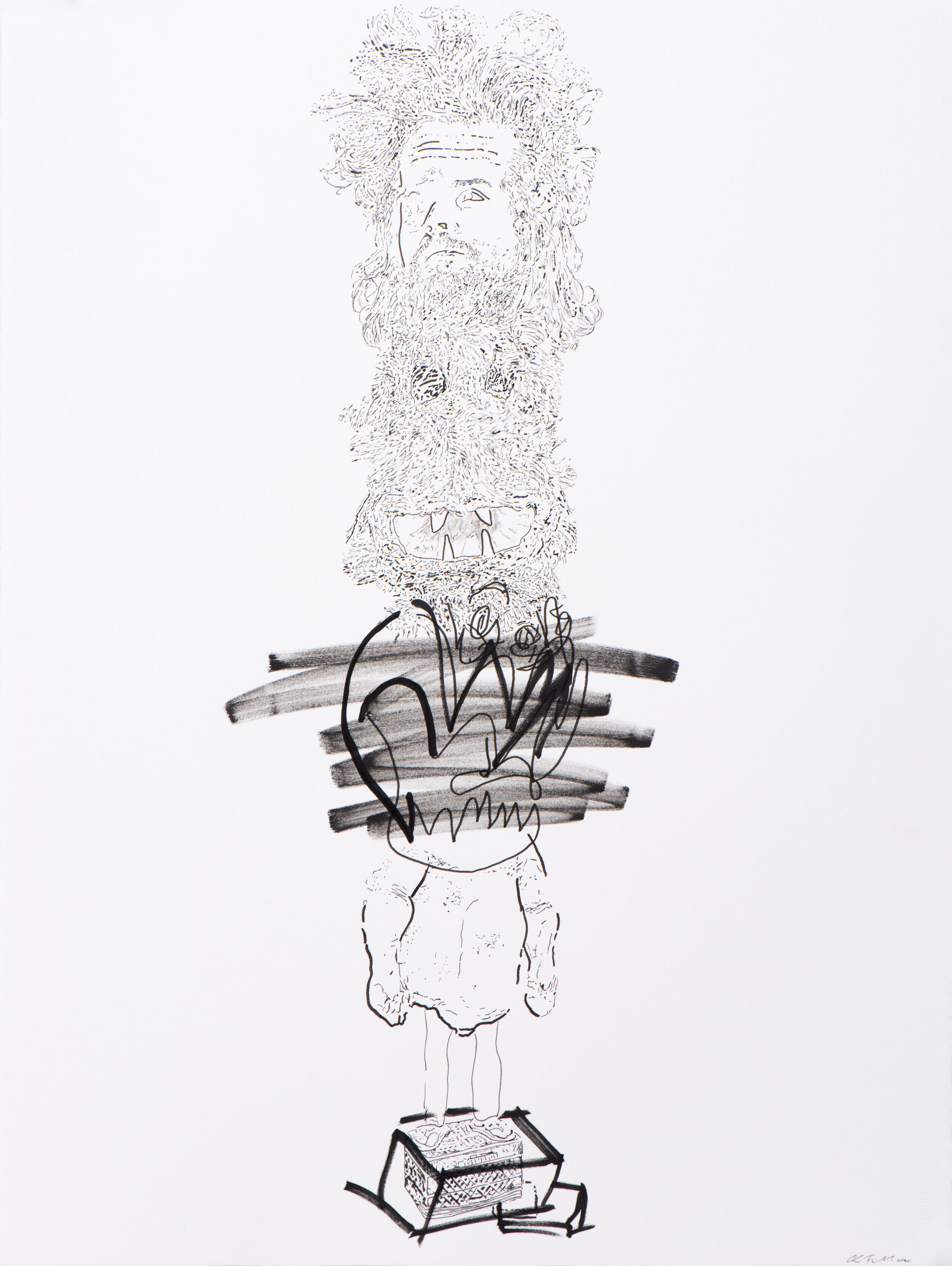Christopher Richmond
works exhibitions news about
totems and chimeras
January 9 - February 6, 2021
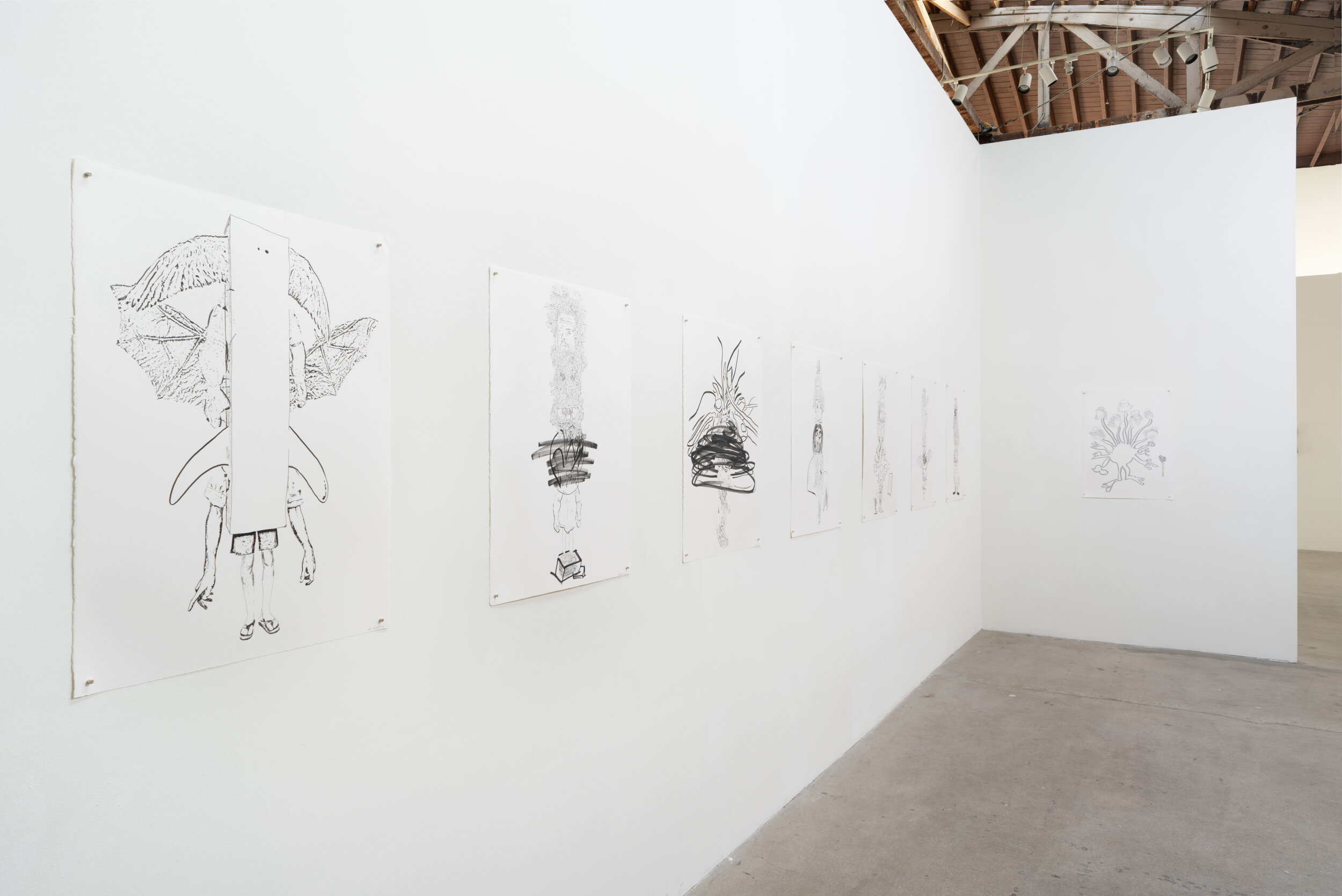
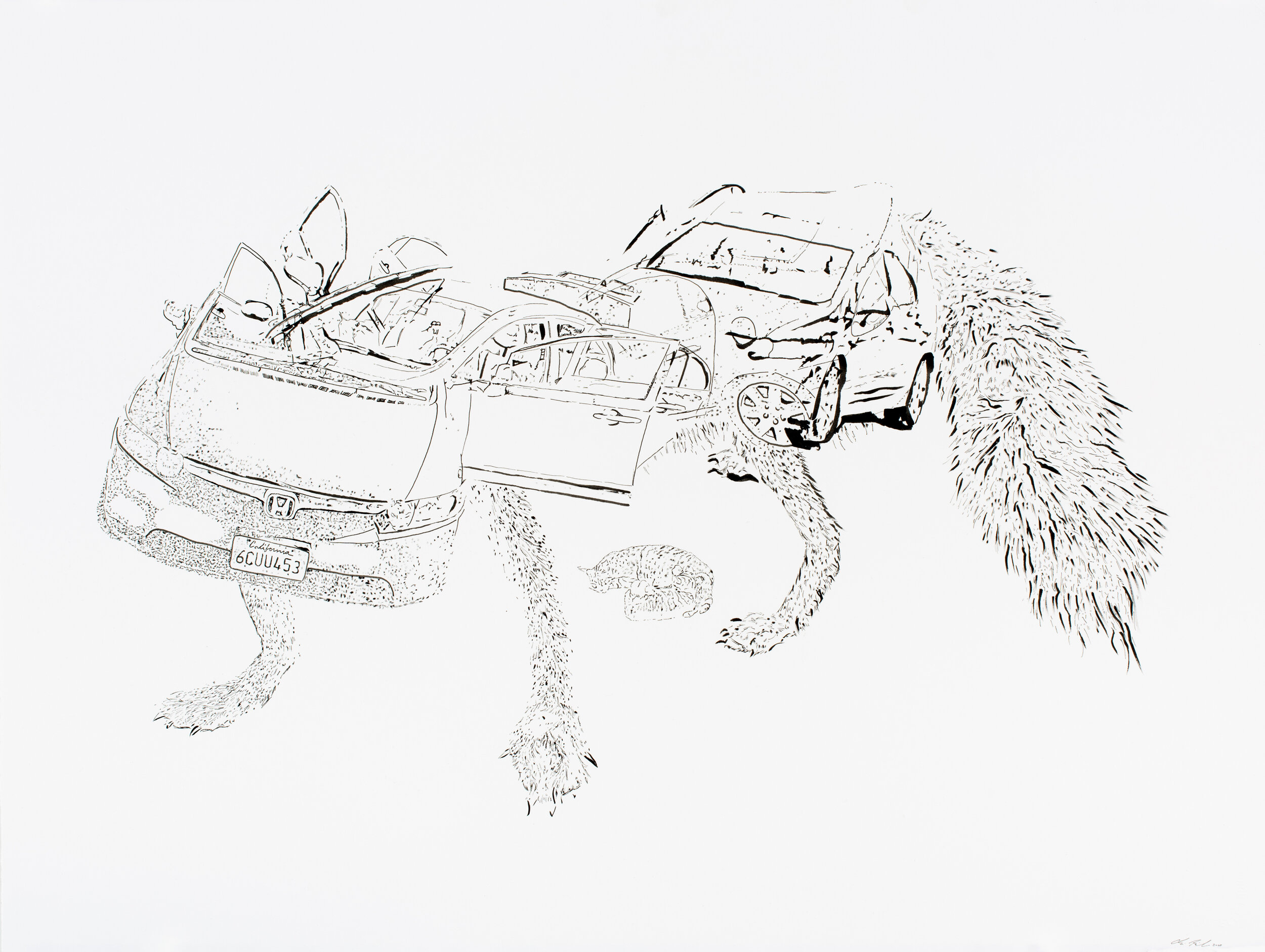
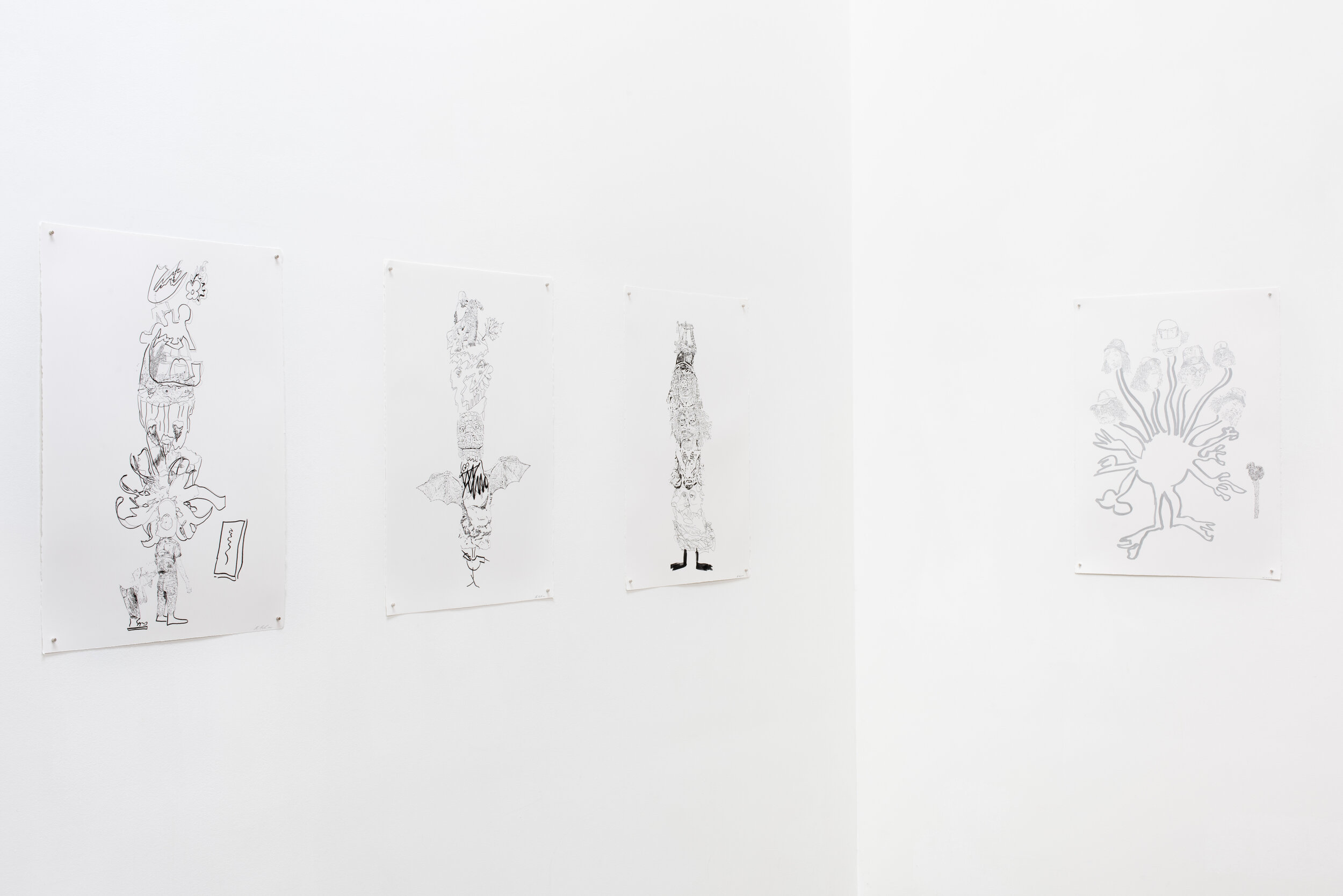
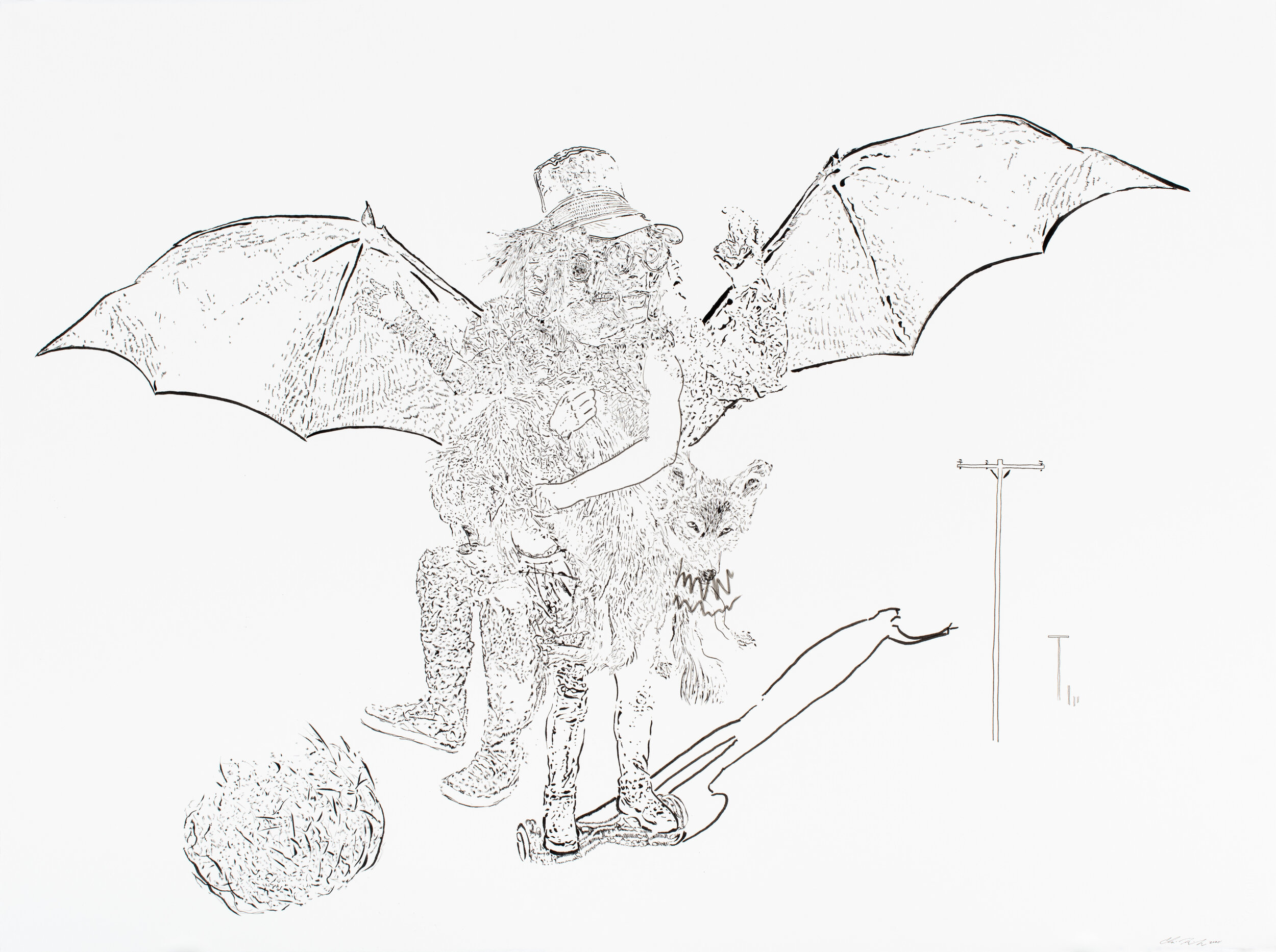
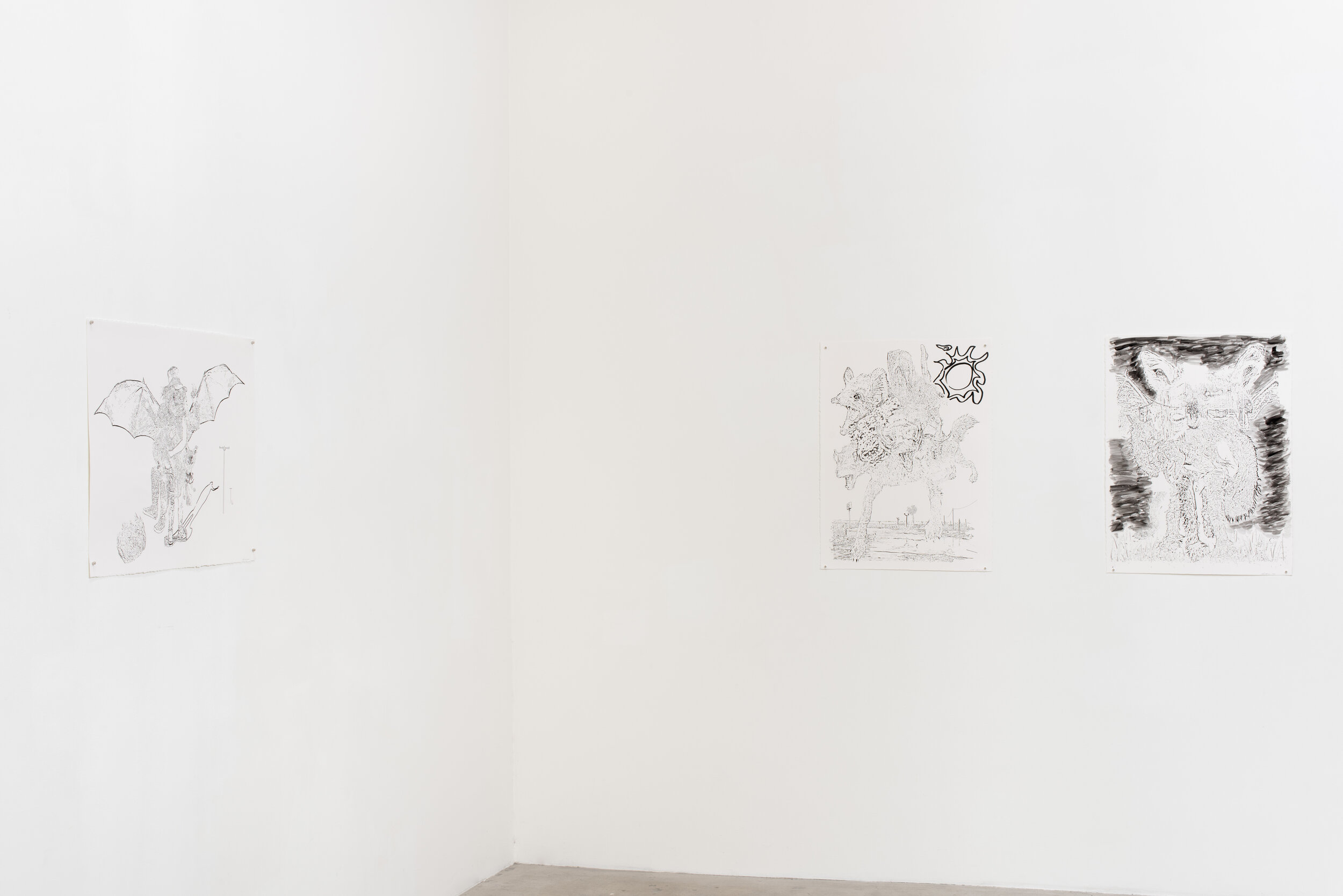
Totems and Chimeras
January 9 - February 6, 2021
press release
Moskowitz Bayse is pleased to present Totems and Chimeras, an exhibition of new drawings by Christopher Richmond. The exhibition will be on view from January 9 through February 6, 2021, marking the artist’s third solo exhibition with the gallery.
Full of nods to science-fiction, self-reference and retooled tropes, Christopher Richmond’s Totem and Chimera drawings offer a concise view into the artist’s expansive practice. By consolidating familiar images from Richmond’s videos and photographs, the drawings confirm the essential connectedness of his constructed artistic universe. At the same time, a new tendril of his work emerges, as precise micron pen rendering finds itself interrupted by gestural, forceful lines made with felt-tip marker. These abrupt moments recall the defining tension in Richmond’s time-based works: the prevailing gulf between fantastic, often surreal intergalactic set-pieces and characters, and their knowingly hyper-terrestrial, very real actualities. In his videos, photographs, and drawings, Richmond explores genre, material expectations, and our appetite for connecting signs to find meaning. All the while, the artist delights at variously subverting and exploiting these elements in service of his ever-expanding earthbound cosmology.
Chimera IV, a quadrupedal mechano-hybrid composite, takes the loose form of a coyote, like the one seen repeatedly throughout Richmond’s 2018 video, Hyperway. But its cocked head and twisting body, of course, are a Futurist superimposition of Richmond’s spacefaring Honda Civic that ferried philosophizing astronauts across the celestial expanse in that same video. A nursing cat, a fixture outside Richmond’s studio, takes refuge underneath the creature.
Chimera III, more humanoid in its architecture, combines various captured stills of Hyperway’s Silver hoverboarding character. He holds the familiar coyote in two of his four arms, its fangs accented and abstracted by a quick, jagged scribble laid down with a half-dry felt-tip marker. His protruding bat wings–a recurring motif–originated with Richmond’s reading Thomas Nagel’s 1974 What Is It Like to Be a Bat, which led to an interest in the sci-fi theory of Alien Space Bats, a genre-specific variant of deus ex machina. The chimera’s incongruous shadow comes from a production photo.
Richmond’s accumulative and permissive approach to source imagery connects the Totem and Chimera drawings, whose reference points frequently overlap. His daily life, which proves a vital source for his video work, appears both filtered and unfiltered through that formal lens. In Totem VI, for example, Richmond’s arms, legs, and customary sandal-clad feet, appear disrupted and thrown out of proportion by a large monolith: a pedestal from his graduate school years. Also attached to the monolith, in ascending order, are shark fins, bat wings (again), the arms from the unnamed character in The Milky Way (2014-2015), and duck wings. Observation, self-portraiture, memory, and invented character become, as so many pieces of Richmond’s practice, a connected whole.
Throughout, Richmond’s lines remain meticulously varied, giving the images a nearly xeroxed effect, at first look. The fast, pressurized scribbles, by contrast, read as immediate and urgent–collisions of the planned and the spontaneous. Like the Richmond universe at large, the unexpected gives way to understanding and a distinctive empathy prevails, illuminating the often unexplained.

